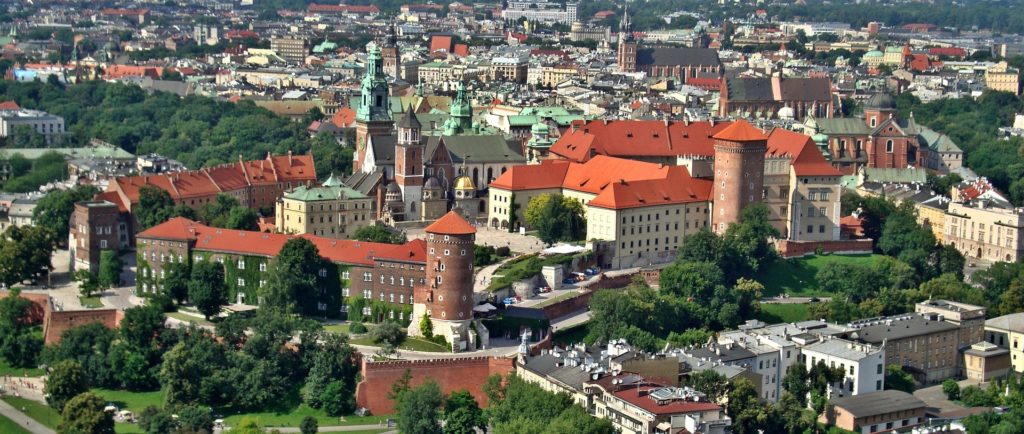If you follow any number of travel sites, scrolling through your Facebook or Instagram feed likely reveals photos of beautiful luxury hotels in far-flung locales. The travel industry has gotten incredible at instilling FOMO, thanks in part to the the number of “influencers” running around (just know that what you see isn’t always reality). Whether its the Maldives or Mykonos, some places can seem unattainable for family travel.
But is travel really that expensive? If you research and plan correctly, it generally isn’t. Some destinations (e.g. the Maldives) may truly need to be scratched. But many of us think they are over-hyped anyway. Seaplane transfers for $400 per person? No thanks. Plus, it’s ridiculously far to go when you have the Caribbean.
Setting the Compass
The first travel blog I started following routinely (many moons ago) was Travel is Free. Drew and his wife Carrie are masters of cheap. Cheap in cost, not cheap in quality. They managed to live on a poverty budget while living nomadically, yet somehow they still managed to average 4-star accommodation along the way. It was incredible to read about. We’d used some points and miles for a trip to Canada in 2015, but still shelled out a lot for car rental, lodging and the like.
I pulled my first super cheap overseas trip in early 2017, shelling out a mere $320 for five full days in Australia, even flying first and business class on the way there. The month my wife and I spent in Europe in 2016 was likewise relatively inexpensive, given the length and places we visited. I say that because we were in maybe $1,000 for all flights and hotel for 30 days. Yes, 30 days.
You may think that is fine and dandy for an adventurous couple without kids. But what about families? Can you travel as cheaply with five people? The answer is yes! It just takes planning and adjustment (and more miles). Here are five tips for the typical family looking to afford travel more:
1. Make It a Priority
Traveling as a family won’t happen unless you make it a priority. If you tally up the “typical” cost of a single trip somewhere across the country for five days, it’ll probably ring in around $3,500. You’re looking at lodging for five people in a metro area (assume $150 per night), round-trip flights (assume $300 per person), and food and attractions for the entire time (assume $200 per day), plus $250 for souvenirs and other incidentals. Super simplistic, and this is not an unreasonable budget. It may even be on the low side for many.
If taking a family trip is a priority, you’ll find a way to make it happen. Things that you prioritize happen. If you always think “someday we’ll get to that”, it never will happen. It may be that you can only budget for one trip per year. Fine. Just focus on that if that’s what works. Set aside money. Plan. Keep it high on the list if it is important to you (or don’t, if it’s not).
2. Cut in Other Areas
Do you need the fastest speed internet? How much do you actually use your cable subscription? Do you spend $100s per month eating out? If you sit down and figure out everything you spend money on, you might realize that there are some easy things to cut if you’re looking for ways to afford travel. The twice weekly coffee may need to go. You can likely find something to cut.
Our family only has one vehicle. This keeps costs down, as we don’t have the extra insurance, maintenance, and registration. But it is a headache sometimes, I’ll admit. It’s our choice. We also don’t subscribe to all that much. Netflix, a couple annual apps (including our budgeting app).
Much of the rest goes toward the necessities: rent, gas, etc. Eating high quality, nutritious food is a priority for us, so we do spend much more than the average household on that, even factoring in our family size. But I do try to stop myself from walking down the street and grabbing a $4 latte from the coffee window.
This ties back into the first point. If travel is important to you, cutting the extra expenses you can is in line with that plan.
3. Research Cheap(er) Destinations
Everyone wants to go to Hawaii. It’s a tropical paradise. But it’s also a 5+ hour flight over the ocean (or nearly 11 if you’re coming from New York). Tickets aren’t cheap. If all you’re looking for is a nice beach for a week, does it really need to be Hawaii? You could spend $89 on a round-trip to Florida instead of $650 to fly to Hawaii. Your kids will probably be just as happy.
Some places in the world are ludicrously expensive to visit. Scandinavia is an example. If you really want to visit Norway, Sweden or Denmark, you’ll have to make sure you budget adequately for the trip. There are a few countries in the world that assess a daily charge to any foreign tourists, not that you’ve considered visiting Bhutan or Angola.
On the other end of the spectrum, you have places like China, Vietnam, Malaysia, India, the Balkan Countries, and many more places that are quite cheap to visit. If all you’re looking for is a new culture to experience but don’t have a lot of cash, these will probably be more appealing. You can really stretch your dollars here for food and experiences.
Considering that you can nab a cheap ticket to east or southeast Asia for $400 or less during the best sales, a trip to these places doesn’t have to break the bank. You can absolutely travel overseas for far, far less than it takes to “do” Disney (which might be the unfortunate benchmark of family vacations).
If your sights are set on more typical destinations like New York, London or Paris, expect to shell out some cash. Or you can use the next pointer to reduce your costs significantly.
4. “Travel Hack”
It should be obvious (as it is a primary theme of my writing) that redeeming points and miles is the way we afford to travel. If I was to cut out the new credit card applications and stick to the ones we have, we might be able to afford a decent one-week vacation each year, plus a weekend getaway or two. If we didn’t fly, we could stretch things a bit more.
Instead, I have six credit cards currently in my wallet, ~25 open accounts, and tend to get a new one or two every quarter. I’ve slowed my mad pace as of late, but it hasn’t abated completely. I was also surprised how many miles and points my wife and I were sitting on in the middle of 2017. Reselling also helps with points accrual. There are ways to keep stockpiling.
Once you start down the travel hacking road, knowing when to earn and when to burn points/miles is key. I typically use points as often as I can when I get good to great value. But in a some cases, spending a little cash to earn a substantial number of points is the better way to go. Choose to earn during the best promotions and burn when you get the best value for your points.
There are so many aspects to this award travel hobby that all I can do is point you toward resources if you aren’t already in the game.
5. Plan, and Plan Well
Instagram is more a nuisance than a help to figure out where to go. The FOMO it instills can work against you. Travel simply isn’t the same for every family. Some families can afford to spend $1,000s every year trotting the globe. Or they have developed a location-independent business that requires nothing more than an internet connection to maintain a steady income. These are amazing, but not the norm.
Many families are simply looking to maximize their 2-3 weeks of vacation. If this is you, planning is critical. I’ve fallen into the trap of planning a trip haphazardly, without enough forethought. We ended up missing attractions due to insufficient research, poor timing, or other factors. Make sure you go and can really enjoy what you’re doing.
There is a side to me that loves the thrill of award travel. It’s more of a chase of the redemption than anything, not even necessarily of the experience. I have to be wary of this, as it influences my planning. It’s an unfortunate aspect of getting good at award redemptions and seeing endless possibilities for my points.
Ultimately, my lesson to be learned is contentment. I love being able to maximize our ability to travel. But at the end of the day, I work a fairly “normal” job (i.e. 40 hours per week in the office with ~4 weeks vacation). I have a wife, three kids to raise, and bills to pay. We’ve found what works for us. Figure out what works for you.
Conclusion
If you’re a family trying to make more travel happen, I highly recommend making a plan of the places you want to see, and then figuring out how to make it happen. It needs to be a priority to happen. Whether it is cutting expenses, “travel hacking”, or a combination of the two, you *can* make extraordinary travel (or just cheap travel) happen for the ordinary family.








Wow! Really nice post!
I always prefer to create travel memories whenever I’m travelling. On my last trip to Maldives, I’d got my personalised printed tshirts with my bae. If you may also want to make your travel memorable, check out this I came across recently: Printrash for personalised gifting solutions – http://bit.ly/printblogs
Really nice article to cut the prices and afford the travelling whenever you want to travel for a middle class family. The one thing I always do is to search affordable good places. They are cheap but are really good and provide value for money. I also read tons of travelling blogs, thanks I end up here. Will visit the site regularly.
Hello There,
I enjoyed the article, as it is about the family tours.. a good point you have made on how to plan. Instagram can be helpful as well in many ways … I am doing tours for families in India and mate tourists and while talking to them, I found that many of them planing their trip as you are suggesting in this article..keep it up, keep supporting tourism around the world. as tourists need more help of your good suggestions in this covid situation.
Wow!! great article about family travel tips!! we also deals on Family Group Budget Tour Packages.
[…] Ways the Typical Family Can Afford to Travel: I enjoyed reading this article on Travel Update about ways a family can afford to travel. Obviously, travel hacking is a huge part of how my family […]